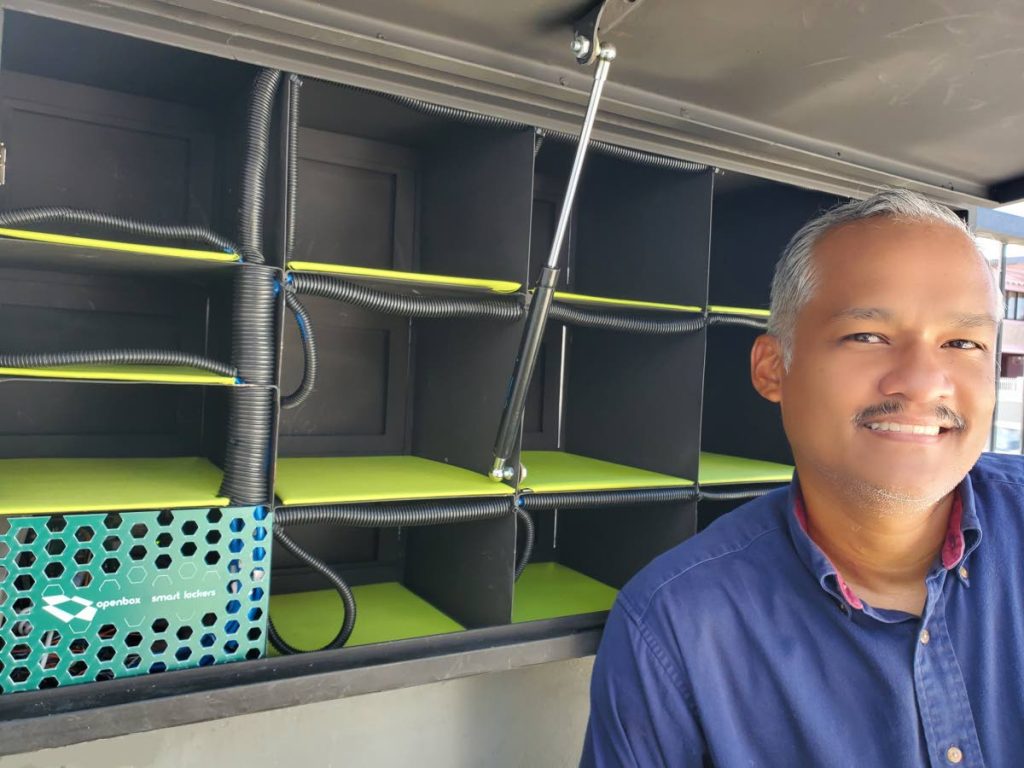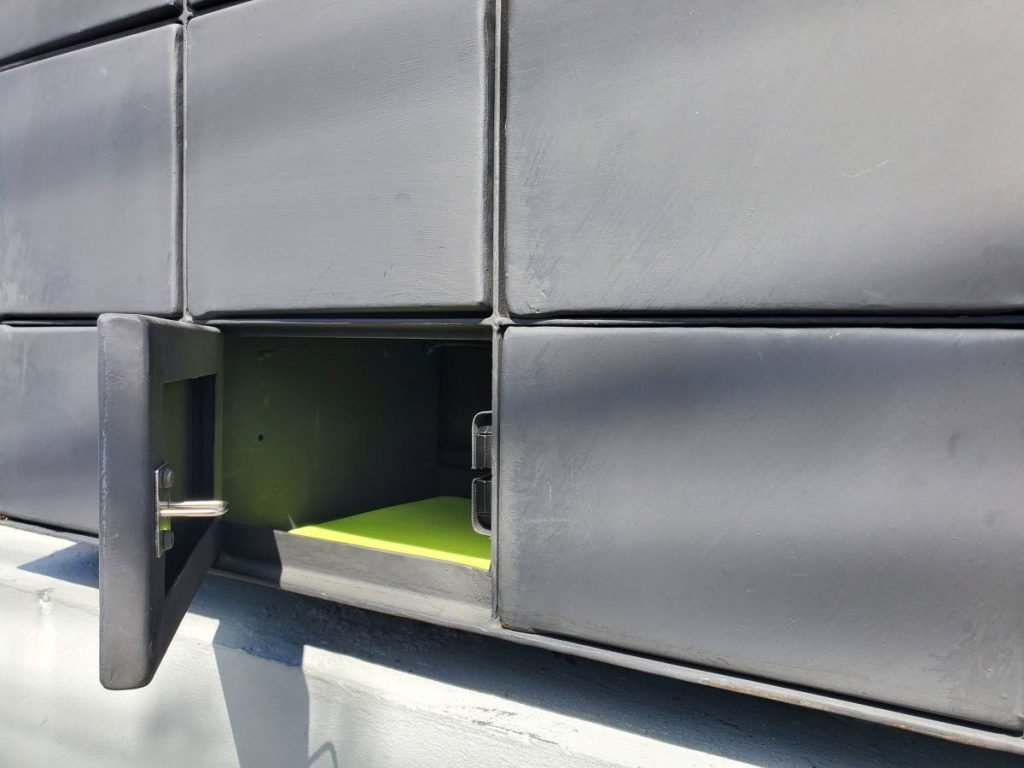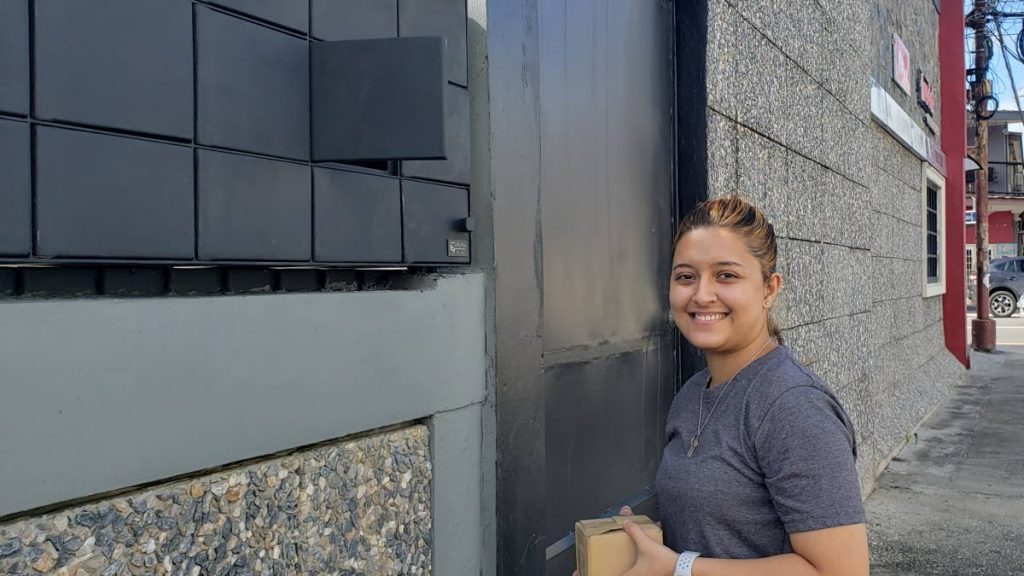Openbox Smart Locker: IT consultant Michael Headley creates digital pick-up service

IT consultant Michael Headley has designed a smart locker so customers of retail companies could have a truly contactless experience at their own convenience.
The idea for the Openbox Smart Locker came from the Amazon Hub Locker which he used several times in the past years. One website explained that customers could add an Amazon Locker to their Amazon address book and select the location of one of the lockers throughout the US as the shipping address during checkout. Once a package is ready for pickup, customers receive an e-mail with a unique code which would be used to remove or return a package to a designated slot.
“During the lockdown I dealt with one particular company sticking bags onto a door for people to collect their orders. They were encouraging people to pick up their packages after hours since they were working shorter hours during the lockdown. I figured there had to be a better way.”
Also, he noticed that his former place of employment, Officeworks Ltd, wanted to protect their staff and tried to minimise the number of people in the office picking up goods.

He thought it would be a good idea for the company and realised there was a need for something like the hub locker in TT. He did a cursory check but did not notice anyone offering the service so he decided to fill the gap.
Initially he tried to order one from China but not only would the software be in Chinese but the locker itself was expensive. In addition, the shipping prices were high, it would have taken a long time to arrive, and he would not be able to customise the software as much as he wanted.
“I said, “You know what? This is doable. All it takes is some IT (information technology) knowhow and some design of this locker. I’m going to make it from scratch so I know exactly what to do if someone needed a change.’”
A software developer before his career took him to other IT areas of expertise over the past 20 years, Headley made a model and coded it. The people he showed were impressed so he decided to build it.
He designed the locker, got the necessary materials, worked with a fabricator to build it, and coded it to his specifications.
Explaining how it worked to Sunday Newsday, he said after payment, the staff would assign a particular locker to a customer. The staff would enter the customer’s contact information on a device and the customer would get an alert with a private numeric code, as well as a time period, up to ten hours, in which to collect the contents of the locker.
All the customer had to do was go to the locker, enter the code manually on a touchpad, or by using a specific app, and the corresponding locker would spring open. The customer would then take or leave an item and close the locker door.
“The customer would get an alert saying you just collected something in case it was an unauthorised pick up. The staff would also get an alert saying the locker was just utilised. It also takes a picture using an integrated camera so there is a bit of an audit trail built into the operation.”
With the smart locker, its contents could be accessed outside of business hours depending on the locker’s location. Someone could also pick it up for the customer once they have the code, or the customer could be anywhere in the world and open the locker for someone else to pick up.
He explained that the code could be entered on a discreetly located touchscreen keypad or a particular free instant messaging app could be used to open the door. The app allowed for alerts and “talks” directly with the system. He compared it to a prepaid phone where a user could text a code to get their credit balance or top up their credit.
“The app I use, when someone initially gets an email, it would invite them to send a verification code to the system to get more capabilities. When they do that, it would know an individual is linked to the app account. The person could then use some simple commands to say, ‘I want to open the locker, I want to delay the delivery, I want to about the delivery and take it out because I’m not coming for it again.’”
He planed to develop a locker that could be accessed using a QR code that could be pointed at the built-in camera to open the locker.
Security is tight
In addition to the integrated camera, he suggested companies install an overhead camera.
He also designed the system so that, if there was a power outage, it was fail secure so the locker would remain locked. The system was not accessible via the Internet without a VPN connection at the administration portal/server back end. And after the designated time period expired, the code would no longer work and the staff would get an alert to clear the locker.

The locker itself was also very discrete with no graphics. It looked like a mailbox as the touch screen was hidden. It was made out of steel with no handles, and no visible locks or hinges so people would not be encouraged to try to pick locks or force it open.
He stressed that the system was not designed to accept payments.
He said the placement of the locker would play a big part in security. Embedded in a wall would be a good idea and, if it was floor standing, companies may want to put a cage around it.
The lockers would be excellent for any retail company that had pick-up orders of medium to low value. They could also be built to specifications and lockers could be installed modularly and expanded as needed, bound only by physical space.
Lan Lee Seyon, founder of Officeworks Ltd was more than happy about the new development.
Her company creates or prints rubber stamps, call cards, signs, stationery and more.
At the company’s office in Woodbrook, a 14-bay locker bank with 8 x 8 x 12 lockers, was installed and already in use.
She said customers could place their order at Officeworks Ltd via the company’s website and pay via account transfer or credit card using WiPay.
“Within 24 hours we are going to make the stamp and put it in the locker. They could come collect it whenever they wish, close the locker and leave so that they never have to come in and see us or anything.”
She stressed that stamps that were high security such as those for banks, embassies, and government divisions, would not be placed in the lockers but would instead be delivered or picked up personally.
“Because of covid19 we decided to do something that was safer for people. We have been trying many ways to see how we could work around this covid thing. We are trying, as soon as possible, to digitise our whole operation.”
She said the smart lockers were just the latest step in improving the company. For example, it stopped using wood for the mounts and handles of their stamps years ago. Instead, Officeworks ordered and used materials from a company that uses recycled materials.
Lee Seyon also encouraged customers to repair their stamps rather than throw them away. Items to repair could be arranged to be dropped off at the lockers as well.


Comments
"Openbox Smart Locker: IT consultant Michael Headley creates digital pick-up service"